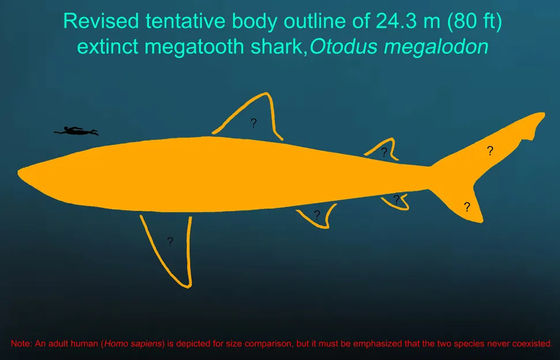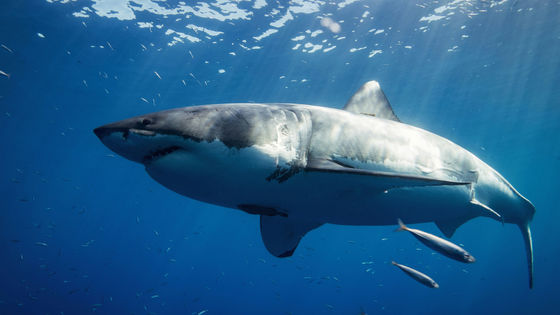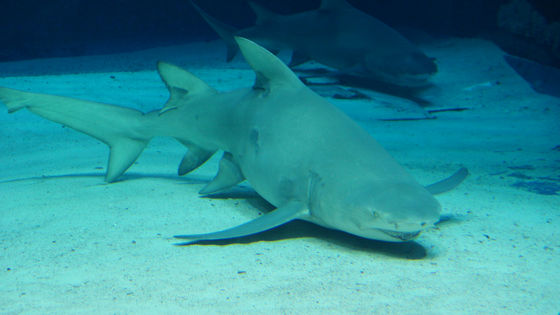It has been revealed that the body shape of the ancient king of the sea, Megalodon, popular in shark movies, was similar to that of the lemon shark

by
The ancient shark ' Megalodon ,' which is said to have lived from the Miocene to the Pliocene epochs about 23 million to 3.6 million years ago, is considered to be one of the largest sharks in history. By comparing the proportions of the body of Megalodon with 145 species of primeval sharks and 20 species of extinct sharks, it has been reported that Megalodon may have had a slim, streamlined body shape like a lemon shark , rather than a body shape like a great white shark .
Biology of Otodus megalodon
https://palaeo-electronica.org/content/2025/5450-biology-of-otodus-megalodon
Study: Megalodon's body shape was closer to a lemon shark - Ars Technica
https://arstechnica.com/science/2025/03/study-megalodons-body-shape-was-closer-to-a-lemon-shark/
Megalodon may have grown up to 80 feet long — far larger than previous estimates | Live Science
https://www.livescience.com/animals/extinct-species/megalodon-may-have-grown-up-to-80-feet-long-far-larger-than-previous-estimates
According to Philip Stearns, a researcher at SeaWorld San Diego, the conventional method of predicting size using fossilized teeth estimated the megalodon to be about 18 to 20 meters in size. However, a complete skeleton of the megalodon has not been discovered so far, and research on the megalodon's body length and shape has been conducted based on the only discovered vertebrae and tooth fossils.
Therefore, Stearns' research team investigated the fossils of Megalodon and compared them with 145 species of living sharks and 20 species of extinct sharks. In a study using Megalodon vertebrae, whose spine is estimated to be about 11 meters long, it was revealed that, assuming that Megalodon has a similar morphology to other sharks, this individual may have had a head of 1.8 meters and a tail fin of 3.6 meters, and the estimated total length reached about 16.4 meters.
Furthermore, the largest megalodon vertebrae discovered to date are about 23 cm in diameter, which is about 7.6 cm larger than the vertebrae of a megalodon with a body length of 16.4 meters. Using the same ratios, it is estimated that a megalodon with a vertebrae with a diameter of about 23 cm would have had a body length of 24.3 meters.

According to the research team, if it is assumed that the megalodon was viviparous, it would have given birth to small sharks measuring 3.6 to 3.9 meters in length.
In addition, the research team also investigated the previously unknown body shape of Megalodon. The teeth of the discovered Megalodon were

However, based on the actual body length of the megalodon revealed this time, as well as analysis based on a hydrodynamic model of how large creatures such as whale sharks,

by ume-y
'Giant primeval sharks such as whale sharks and basking sharks, as well as many other giant aquatic vertebrates like whales, have slender bodies because their large, stocky bodies are hydrodynamically inefficient for swimming,' Shimada said. 'Great white sharks may be large, but they cannot grow to more than 7 meters in size due to hydrodynamic constraints. Also, if a great white shark were to grow to the size of Megalodon, it would no longer be able to swim efficiently due to hydrodynamic constraints. This supports the idea that Megalodon likely had a much slender body than modern great white sharks.'
On the other hand, Jack Cooper, a researcher into megalodons at Swansea University, points out, 'Stearns and his team include whales in the underwater movement of large creatures. Whales not only have completely different skeletons from sharks, but also have completely different swimming styles. Therefore, the hypothesis that 'megalodon was slender' is merely a hypothesis and does not clearly exclude previous imaginations.'
Related Posts:







